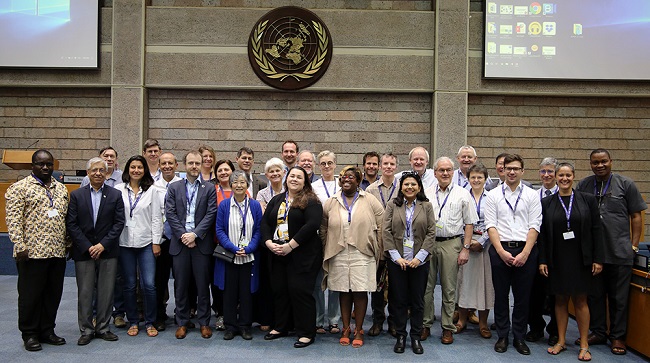The Sixth Global Environment Outlook (GEO-6) Summary for Policy Makers (SPM) has been endorsed and is set for presentation to the fourth session of the UN Environment Assembly (UNEA-4).

This formed a major outcome of the Intergovernmental Meeting on the GEO-6 SPM convened from January 21 to 24, 2019 at the UN Environment (UNEP) headquarters in Nairobi, Kenya. The meeting was attended by 251 participants from 95 countries, including 26 participants from major groups and stakeholders.
Throughout the week, delegates discussed the SPM in order to reach agreement on a document that will be presented to UNEA-4. On Thursday, January 24, they agreed to the GEO-6 SPM, and requested the Assessment Report Co-Chairs to formulate and forward a summary with key messages of the SPM to UNEA-4.
Jorge Laguna-Celis, Secretary, Secretariat of Governing Bodies and Stakeholders, UNEP, who opened the meeting, noted that GEO-6 would be presented to UNEA-4 for possible endorsement in March 2019.
Joyce Msuya, Acting Executive Director, UNEP, characterised the GEO reports as one of the most important UNEP products, representing “the very best of science and partnership for the environment.” She noted that, unlike previous reports, the GEO-6 report considers policies that may help make a difference in future outcomes.
Highlighting the disconnects between policy, science, and action, Keriako Tobiko, Cabinet Secretary for Environment and Forestry, Kenya, urged decision makers to incorporate science into policies and called for translating policy into tangible, concrete and measurable actions on the ground. He lauded the GEO-6 authors for incorporating traditional knowledge, thus strengthening the link between science and traditional knowledge.
The GEO-6 report, organised under the theme “Healthy Planet, Healthy People,” draws attention to the connection between environmental and human health. It also encourages the achievement of the environmental dimensions of the Sustainable Development Goals (SDGs), internationally agreed environmental goals, and the objectives of multilateral environmental agreements (MEAs), for the benefit of humankind.
The GEO-6 differs from the GEO-5 in that the development of this report involves Co-Chairs in addition to Vice-Chairs. This structure was recommended by the Scientific Advisory Panel (SAP) to help further ensure the scientific credibility of the GEO-6 process, and to encourage learning from best practices from the Intergovernmental Panel on Climate Change and Intergovernmental Science-Policy Platform on Biodiversity and Ecosystem Services.
The GEO-6 meeting considered the second order draft of the SPM, which was developed at a meeting convened by the High-level Intergovernmental and Stakeholders Advisory Group. The GEO-6 assessment report and the SPM adopted at this meeting will be presented for consideration and possible endorsement by UNEA-4, which will be held from March 11 to 15, 2019 in Nairobi, Kenya. This endorsement is expected to raise the profile of GEO assessments due to the high-level and universal membership of UNEA.
The SPM consists of five sections:
- What is the Global Environment Outlook?
- What is Happening to Our Environment and How Have We Responded?
- Effectiveness of Environmental Policies;
- Changing the Path We Are On; and
- Knowledge for Action.
Previous GEO Reports
GEO-1, published in 1997, provided a comprehensive overview of the state of the world’s environment and showed that although significant progress had been made in confronting environmental challenges in both developing and industrialised regions, there was still a need to vigorously pursue environmental and associated socioeconomic policies.
GEO-2, published in 1999, concluded that if current trends in population, economic growth, and consumption continued, the natural environment would be increasingly stressed.
GEO-3, published in 2002, provided an overview of the main environmental developments over the previous three decades, demonstrating how social, economic, and other factors contributed to the changes that had occurred. It highlighted increasing poverty and concluded that four major divides categorise the world and threaten sustainable development, namely, the environmental, policy, and lifestyle divides, and the vulnerability gap.
GEO-4, published in 2007, assessed the state of the global atmosphere, land, water, and biodiversity, as well as the human dimensions of environmental change, and presented scenarios and policy options for action in the context of environment for development. It issued an urgent call for action in dealing with persistent and urgent environmental problems, such as climate change, that undermine human wellbeing and development.
GEO-5 was requested by the 25th session of the UNEP Governing Council, held in February 2009, in Nairobi, Kenya. The GEO-5 report differed from previous GEO reports by shifting from assessing priority “problems” to include assessments of priority solutions. The GEO-5 report consisted of three major parts: an assessment of the state and trends of the global environment; regional policy analyses; and potential opportunities for action at the global level.
